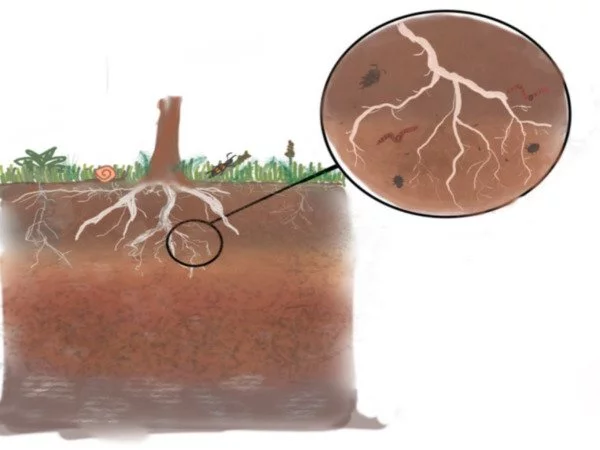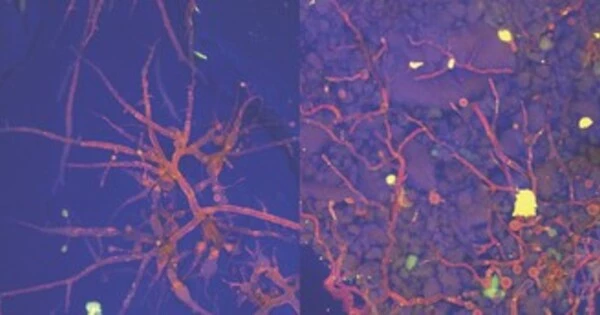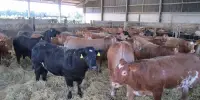Transparent soil, which has recently been developed, could help shed light on the hidden world of plant roots. The new material, created by biologists, chemists, and physicists, has the potential to improve crops and identify new methods of preventing food poisoning outbreaks. Plants absorb water and minerals through root systems that can be larger in volume than the plant’s above-ground parts. Scientists would like to learn more about roots, but much of what they know about them is hidden underground.
A study published in eLife found that soil bacteria rely on fungi to help them survive dry periods by using two different transparent soil substitutes. The findings suggest that researchers may be able to observe the complex interactions of the myriad microscopic creatures that live in soil using these soil-like substrates. This ability is crucial to help us better understand the role that soil and soil microbes play in healthy ecosystems.
In the soil, millions of microscopic organisms such as fungi and bacteria live. They are essential for healthy ecosystems because they promote plant growth and capture and store carbon from the atmosphere. However, studying these processes in actual soil can be difficult.
To advance the study of soil processes, we used transparent soil substitutes that allowed us to use microscopes and other experimental techniques to see and measure the activity of soil bacteria and determine how this activity depends on the fungi.
Kriti Sharma
“To advance the study of soil processes, we used transparent soil substitutes that allowed us to use microscopes and other experimental techniques to see and measure the activity of soil bacteria and determine how this activity depends on the fungi,” says lead author Kriti Sharma, who completed the study as a doctoral student at the University of North Carolina at Chapel Hill, US, and is now a postdoctoral scholar at Caltech, Pasadena, US.
In the experiments, Sharma and collaborators from Vienna, Austria, successfully grew soil bacteria and fungi in two transparent soil substitutes. One was a synthetic substance called Nafion and the other was a naturally occurring crystal called cryolite. They also demonstrated that it was possible to observe living microbes in these substitutes using a microscope and to measure the organisms’ overall metabolic activity and uptake of carbon using a technique called Raman microspectroscopy.

They then used the soil substitutes to investigate what happens to bacteria when soil is dried out and then rewet. The experiments revealed that while many soil bacteria die or become inactive when soil dries out, bacteria living near dead fungi remain active and use the fungi as a carbon source. “In this way, fungi promote the activity of soil bacteria in changing environmental conditions,” Sharma explains.
The transparent soil systems described in the study will most likely be used by many other soil ecology researchers, according to senior author Elizabeth Shank, Associate Professor in the Program in Systems Biology and the Department of Microbiology and Physiological Systems at the University of Massachusetts Medical School in Worcester, Massachusetts, US.
“For example, they could be used to investigate how interactions between bacteria, fungi, and other microscopic creatures living in soil aid crop growth,” she explains. “Or to learn more about how carbon is stored and released from soil, which could be useful in combating climate change. Overall, these transparent soil substitutes are potent tools that will aid in the resolution of many outstanding questions in soil microbial ecology.”
Scientists could, for example, genetically modify plants so that key growth hormones and other compounds are labeled with fluorescent proteins. This would allow researchers to track how these molecules circulate in living plants and observe how roots behave, which could explain why some plants perform better than others under the same growing conditions.















